Senegal's Dakar Biennale: From red swimmers to floating teapots
- Published
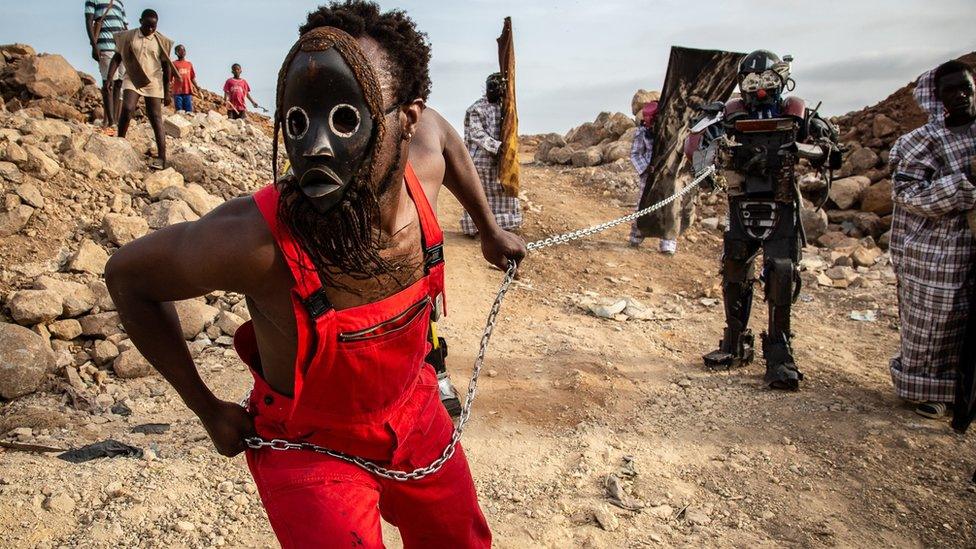
One of the largest events in the African modern art world, the Dakar Biennale, has returned for its 14th edition - after a four-year gap because of the coronavirus pandemic - featuring hundreds of pieces from artists from around the world.
Exhibits have popped up throughout Senegal's capital, including in galleries, fine art centres, restaurants and hotels.
The theme for this year is Ndaffa, which means "to forge out of the fire" in the Serer language.
One of the artists, British-Nigerian painter Tunji Adeniyi-Jones, said his time in Senegal had inspired his work.
His pieces, including the blue and red one pictured below, centre on dance and movement.
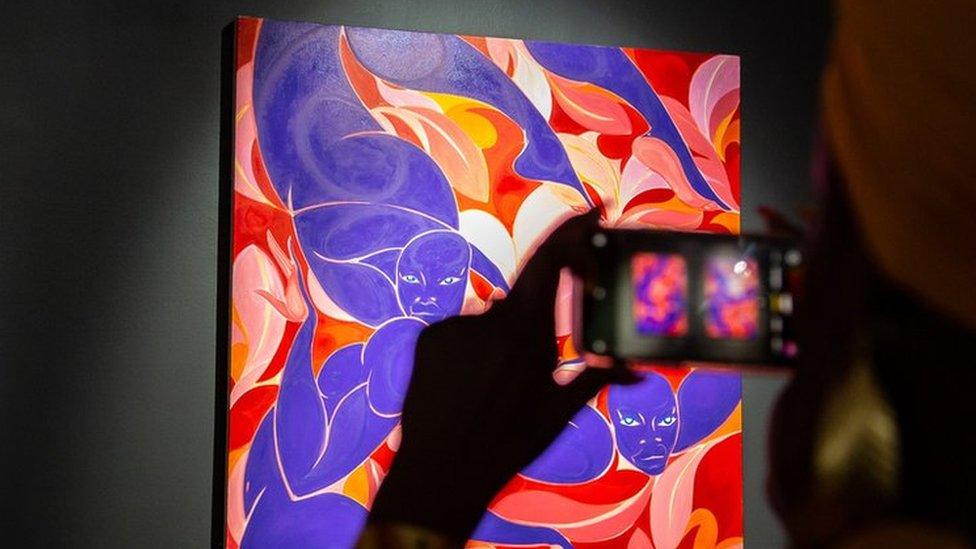
"I absorbed everything in my surroundings and that manifested in some paintings that were a bit more fluid and expressive," he said. "There was more spirit in the work."
Another Nigerian artist, Tyna Adebowale, said she was touched by how welcomed she felt in Senegal. She was particularly inspired after spending several days with an elderly woman who would go on to become the voice behind her paintings.
Her work, she said, is an exploration of feminism through the lens of that Senegalese matriarch.
"Senegal is this very beautiful spirit," she said. "Inserting yourself in a space where you don't understand the language but you still feel at home - it's beautiful."
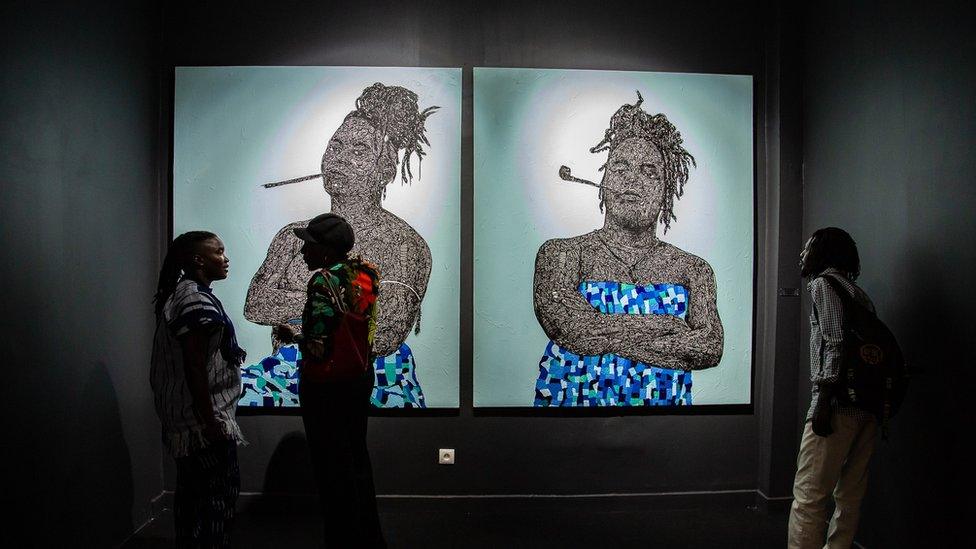
The main exhibit is being held at the Ancien Palais de Justice in Dakar and is composed of 59 artists from nearly 30 countries.
The month-long event is expected to attract 250,000 visitors, as it did when it was last held in 2018, when around 50,000 travelled to the Senegalese capital from abroad for the festival.
One work, by Nigerian artist Ngozi Ezema, features hundreds of strings beaded with bits of clay suspended in mid-air.
From the front angle it takes the shape of a teapot being tipped into a teacup.

The piece represents the effort Ezema pours into her various endeavours: her work, her children and her marriage. Often the teacup is cracked and unable to be filled - she rarely has a chance to enjoy the tea.
Another striking piece of artwork is found on Dakar's coastal walkway - a red swimmer by Senegalese artist Diadji Diop.
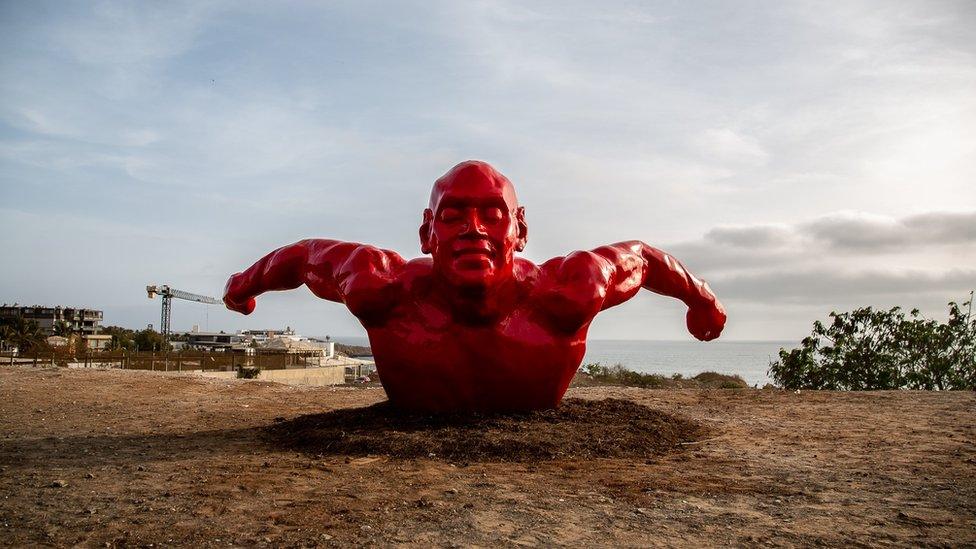
The sculpture symbolises the emergence from the pandemic and a moment to catch one's breath.
During the biennale outdoor spaces have transformed into walkable exhibits and performance halls.

Some of the other artists being featured at the festival are from the United States, Mali, Rwanda and France.
Moses Hamborg's work, pictured on the right hand side in the photo below, was on display at the opening of the Black Rock gallery on 20 May.
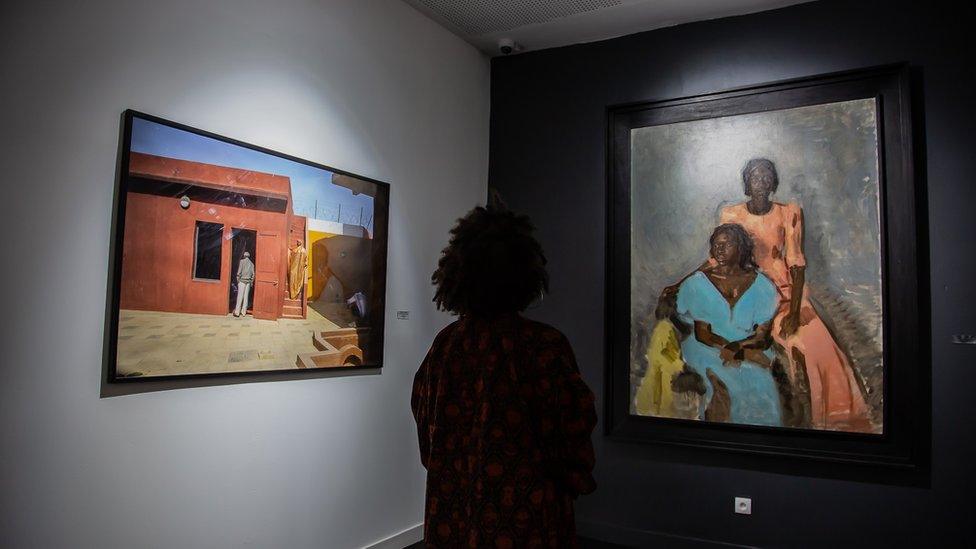
He has been in Dakar for the last two months and is impressed by how integrated art and culture are in everyday life.
"I feel like the biennale's been going on for a while. It's on the streets of Dakar everyday," he said. "Senegal is such a welcoming place and I feel so lucky to have been able to access that."
Meanwhile, back at the Ancien Palais de Justice, the work of Malian artist Abdoulaye Konaté was on display on 21 May:
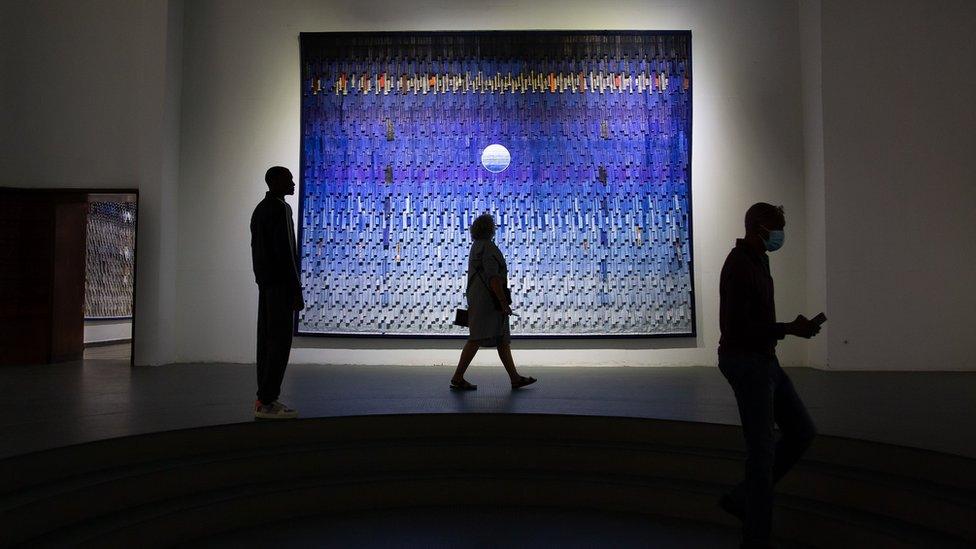
At the same event on the same day, paintings by Rwandan artist Gilles Dusabe were on display:
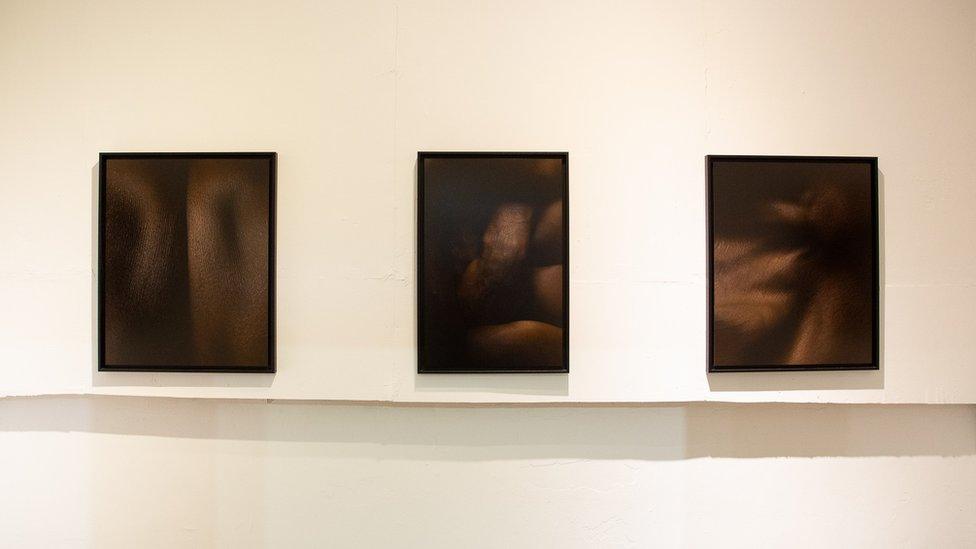
As was the work of French artist Louisa Marajo:
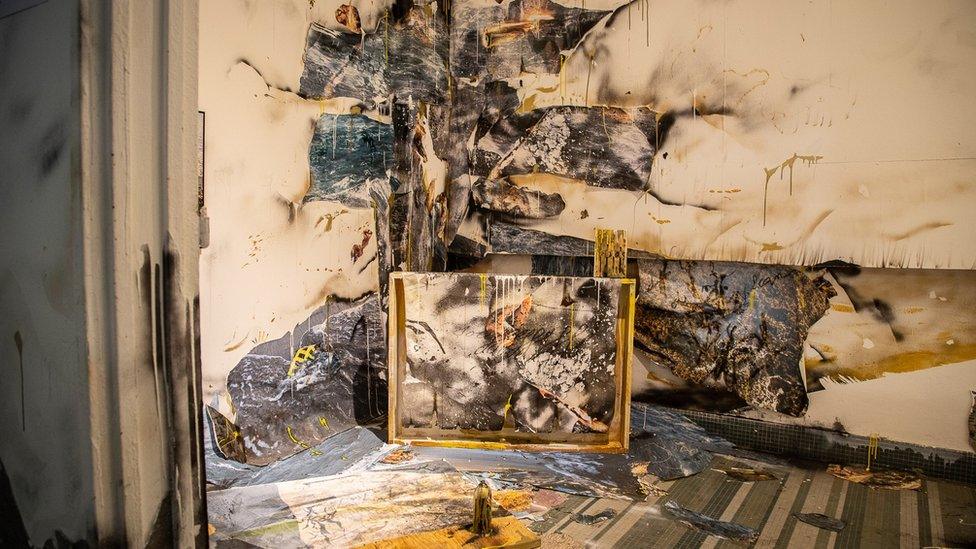
Senegalese artists are also front and centre at the Biennale, including works of Aissa Dione:
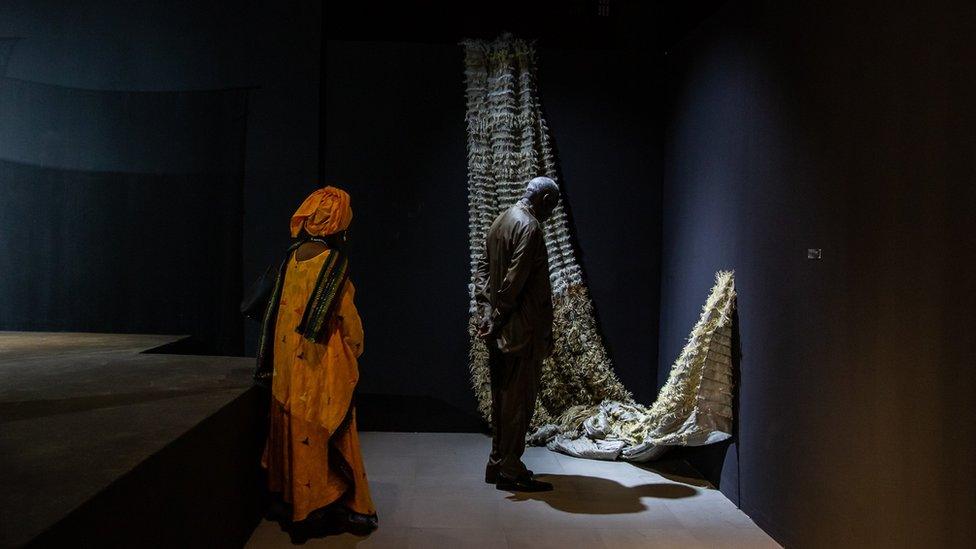
And these sculptures by Abdou Fary Faye:
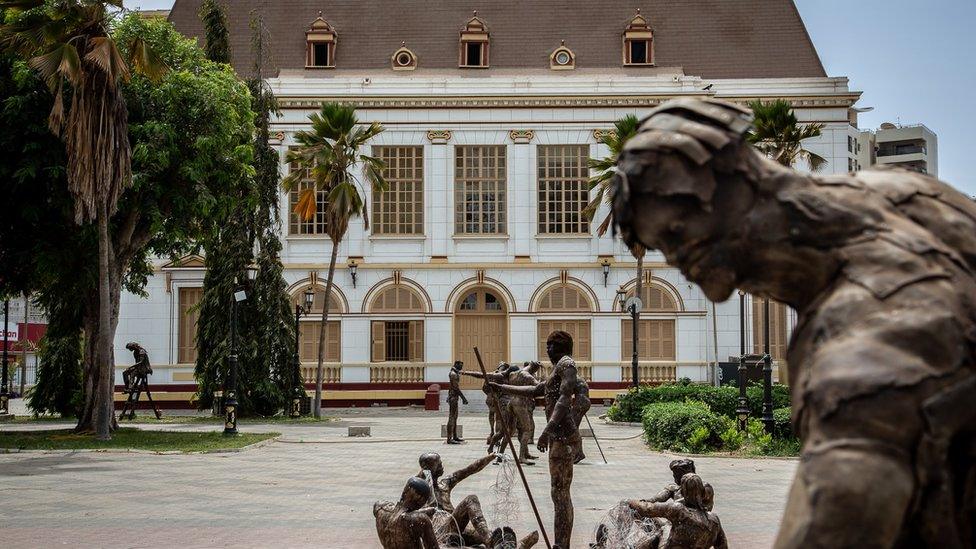
Alioune Diagne, who uses a combination of figurative and abstract styles, is known for his paintings inspired by daily life in Senegal:

The biennale, which started on 19 May, will run until 21 June.
One of the attendees, from New York City, said he admired how the art he had seen around Dakar acted as a mirror.
"It responds to what's around, it doesn't add fluff. It doesn't overcomplicate things," Devin B Johnson commented.
Images subject to copyright.